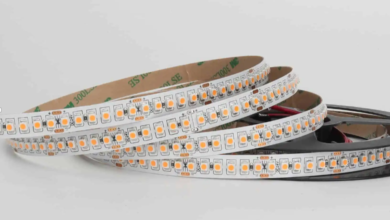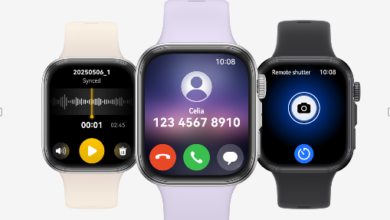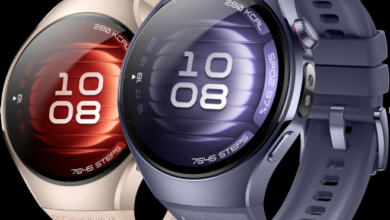Wind Turbine Guide: How They Work & Benefits of Wind Energy

As the world shifts toward sustainable energy solutions, wind power has become more popular. In fact, it is considered as one of the most efficient and eco-friendly alternatives to traditional fossil fuels. Additionally, this renewable energy source is playing a crucial role in reducing carbon emissions and promoting environmental sustainability. At the heart of wind energy production are wind turbines. These are innovative machines designed to convert wind into electricity. So in this post, let’s discover how they work, their benefits, and more!
Best Wind Turbine for Home
- What Is a Wind Turbine?
- Advantages of Wind Power
- Set up Wind Turbine
What Is a Wind Turbine?
A wind turbine is a device that converts the kinetic energy of the wind into electrical power. It is one of the most widely used technologies in renewable energy. Also, wind turbines come in various sizes, from large utility-scale models found in wind farms to smaller versions designed for home use.
Basic Components of a Wind Turbine
Wind turbines consist of several key components that work together to generate electricity:
- Blades – Capture the wind power and rotate when the wind blows.
- Rotor – The blades are attached to the rotor, which spins as the wind moves them.
- Nacelle – The housing that contains essential components, including the gearbox and generator.
- Generator – Converts the rotational energy into electrical power.
- Tower – Supports the turbine and raises it to a height where it can capture stronger winds.
- Controller & Sensors – Monitor wind speed and direction to optimize turbine performance.
See also: AI Face Swap Technology in Prank Videos and Viral Challenges
How Wind Turbines Convert Wind Power into Electricity
Wind turbines operate based on a simple principle: wind energy is converted into mechanical energy, which is then transformed into electricity. Here’s how the process works:
- Wind blows over the turbine blades, causing them to spin.
- The rotor turns the main shaft, which is connected to a generator inside the nacelle.
- The generator produces electricity as the mechanical rotation is converted into electrical energy.
- The electricity is transferred through power lines to homes, businesses, or storage systems.
Advantages of Wind Power
Wind power is one of the most promising renewable energy sources. It offers significant environmental, economic, and sustainability benefits.
1. Environmental Benefits: Reducing Carbon Footprint
One of the biggest advantages of wind energy is its ability to generate electricity without producing greenhouse gas emissions. Unlike fossil fuels, wind turbines harness a natural resource without contributing to climate change. Additionally, wind energy does not require water for operation. Thus making it a more sustainable choice in regions facing water scarcity.
2. Economic Benefits: Long-Term Cost Savings on Electricity
Wind energy is not only environmentally friendly but also cost-effective in the long run. Once installed, wind turbines generate electricity at minimal operating costs, leading to significant savings on energy bills. Furthermore, many governments offer incentives, tax credits, and rebates to encourage the adoption of wind power. Thus making it an even more attractive option for homeowners and businesses. As technology advances and production costs decrease, wind power continues to become more affordable and accessible.
3. Sustainability and Reliability of Wind Energy
Wind is an abundant and renewable energy source that will never run out. Unlike fossil fuels, which are finite and subject to price fluctuations, wind energy provides a stable and sustainable alternative. Modern wind turbines are also highly efficient, capable of generating power even at low wind speeds. In combination with battery storage solutions and smart grid technology, wind power can provide a reliable and continuous energy supply, helping to strengthen energy security and reduce reliance on imported fuels.
Set up Wind Turbine
Luckily, it is now easier to set up a wind generator in your home. One good example is Nature’s Generator Wind Turbine. With this, it will turn your backup power as a wind generator and charge it using wind energy. Furthermore, it is built with high quality materials like aluminum alloy to protect it from natural elements.
- Find an ideal place to mount the Nature’s Generator Wind Turbine. You can buy a 1.5-inch schedule 40 steel tubing or piping to your local hardware store and mount it there.
- Next, get your manual and follow the instructions there to install the wind turbine.
- Finally, connect your wind turbine to your wind generator.
Specifications:
Power Rating
- Rated Power: 150W at 27 MPH
- Maximum Wind Speed: 110 MPH
Material
- Blades: Fiberglass nylon composite
- Body: Cast aluminum alloy with powder coating
- Cable: 12AWG pure copper
Connectors
- Wind Turbine Cable Connectors: Weatherproof M19 3P connectors
- Wind Input Connectors: Anderson connectors
- Yaw Compatibility: Fits 1.5-inch Schedule 40 pipes or towers
General
- Rotor Diameter: 51 inches (1.3 m)
- Weight: 22 lbs (10 kg), excluding cables and controller box
- Certifications: CE, RoHS
- Warranty: 12-month limited warranty
Conclusion
As the demand for clean and sustainable energy continues to grow, wind power stands out as a reliable and eco-friendly solution. Wind turbines play a crucial role in harnessing this renewable resource, offering both environmental and economic benefits. From reducing carbon emissions to providing long-term cost savings, wind energy is a smart investment for a greener future. Now, you know all the essential information you need and a great product like the Nature’s Generator Wind Turbine. With this, you can start your journey to a cleaner, sustainable energy.




